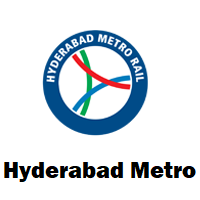

Depending upon the technical requirement and locational constraints, different shapes have been adopted for the pillars. It is always good to have a private player in the market for benchmarking purposes and for copying innovative ideas.The pace of construction was also significant, as, on an average, one pillar was constructed per day, he said. Particularity I want to see if they can run a metro system much more cheaply (without compromising quality) as compared to public metro systems. But I will be looking forward to the operating costs for L&T run system. Overall, this project certainly doesn’t look like a harbinger for PPP metro projects in India. And I thought Delhi people were completely ripped off with the recent metro price hikes.

Slabs (18-22,22-26) cost Rs 50 and Rs 55 in Hyderabad but Rs 50 in Delhi. Slabs (10-14,14-18) cost Rs 40 and Rs 45 in Hyderabad but Rs 40 in Delhi. Slabs (4-6,6-8,8-10) cost Rs 25, Rs 30 and Rs 35 in Hyderabad but Rs 30 in Delhi. Ticket prices for Hyderabad Metro also look rather high (another indication of high construction costs). So, I am not really sure if L&T has been more efficient as far as construction costs are concerned.

Now I know land acquisition costs vary from city to city and so do construction costs (overground or underground) but land is pretty expensive in Delhi. Hyderabad Metro has so far cost 15,000 crores for 30 km i.e., 500 crores per km, In comparison, Delhi Metro phase III will cost 41,000 crores for 150 km, i.e., 270 crores per km. So the pace of construction has been pretty slow as compared to other Metro systems such as Delhi.Ĭost wise too the project seems rather expensive. Hyderabad Metro’s work started in 2012, so it has taken them 7 years to complete just 30 km i.e, a little over 4.2 km per year. Stations – Nagole, Uppal, Survey of India, NGRI, Habsiguda, Tarnaka, Mettuguda, Secunderabad East, Parade Grounds, Paradise, Rasoolpura, Prakash Nagar, Begumpet and Ameerpet (Interchange) Stations – Miyapur, JNTU, KPHB Colony, Kukatpally, Balanagar, Moosapet, Bharat Nagar, Erragadda, ESI Hospital, SR Nagar and Ameerpet (Interchange) L&TMRHL finalized the line’s fare chart in November 2017 and Keolis SA (operations & maintenance contractor) initially plans to run services from 6 am to 10 pm by deploying 18 Hyundai Rotem trains at a headway of 15 minutes, equipped with Thales’ SelTrac Communications-Based Train Control (CBTC) solution, to serve users through 24 stations spread across 2 lines – Testing first began on the 8 km Nagole – Mettuguda route in August 2014, followed by the 12 km Miyapur – SR Nagar route in May 2015, then the 8.20 km Mettuguda – Begumpet route in October 2017 and finally the 750 m SR Nagar – Ameerpet and 1.6 km Ameerpet – Begumpet routes in early-November 2017. L&T Metro Rail (Hyderabad) Limited received the Research Design and Standards Organisation (RDSO)’s speed certificate in June 2016, and secured the Commissioner of Metro Rail Safety (CMRS) approval for beginning operations in April 2016 ( Nagole – Mettuguda), October 2016 ( Miyapur – SR Nagar) and November 2017 ( SR Nagar – Ameerpet – Mettuguda). Hyderabad’s metro project has been developed under the public-private partnership (PPP) model, with Larsen & Toubro executing the project on the Design-Build-Finance-Operate-and-Transfer (DBFOT) basis with a concession period of 35 years and renewal period of a further 25 years. After the concession agreement with L&T was signed in September 2010, the project’s ground breaking ceremony to start construction work took place on April 26, 2012. The 30 minute programme started with an inaugural plaque getting unveiled outside of the station, followed by a ribbon getting cut inside and a short video presentation, and culminated with the inaugural train getting flagged off towards Kukatpally and back. Chandrashekhar Rao inaugurated services on the first 29.80 km section of Hyderabad Metro’s 72 km Phase 1 project between Miyapur – Ameerpet (Line-1) and Nagole – Ameerpet (Line-3) at an event held at Line-1’s Miyapur Station. Less than an hour ago, India’s Prime Minister Narendra Modi and Telangana Chief Minister K. Say hello to Hyderabad Metro – India’s 10th operational metro rail system ? ⋅ by TMRG ⋅ in Hyderabad Metro ⋅ 21 Comments


 0 kommentar(er)
0 kommentar(er)
